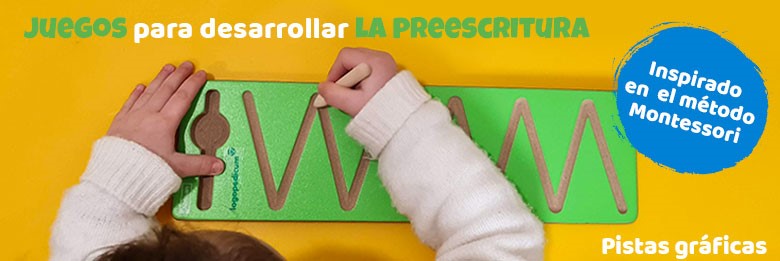
Aprender es modificar o adquirir nuevas habilidades, destrezas, conocimientos, conductas y valores mediante la experimentación, el estudio, la observación, el razonamiento o la instrucción. Múltiples y variados juegos disponibles hoy en día, desde los más clásicos hasta los más innovadores, pueden ser grandes herramientas para construir una variedad de aprendizajes: lectoescritura, matemáticas, razonamiento y resolución de problemas, etc. aportando motivación e interés a los jugadores. Más allá de la estimulación de las inteligencias múltiples, fomentaremos la autoestima, incentivaremos la cooperación y el trabajo en equipo y mejoraremos el comportamiento y la actitud, entre otros muchos aspectos.
 Auditory Memory Caterpillar
29,90 € (VAT not included)
Auditory Memory Caterpillar
29,90 € (VAT not included)
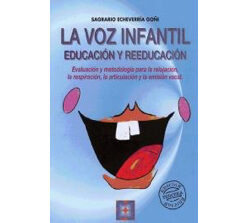 La voz infantil. Educación y reeducación
56,00 € (VAT not included)
La voz infantil. Educación y reeducación
56,00 € (VAT not included)
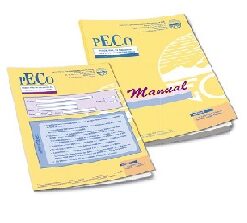 Prueba para la Evaluación del Conocimiento Fonológico
27,90 € (VAT not included)
Prueba para la Evaluación del Conocimiento Fonológico
27,90 € (VAT not included)
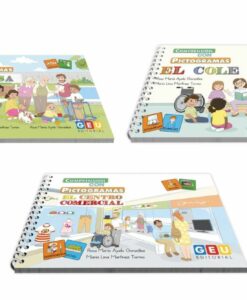 Comprehension with pictograms
10,25 € (VAT not included)
Comprehension with pictograms
10,25 € (VAT not included)
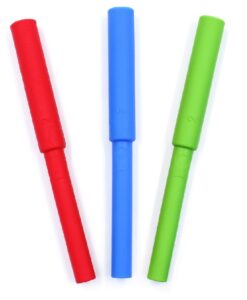 Bite tube
9,90 € (VAT not included)
Bite tube
9,90 € (VAT not included)
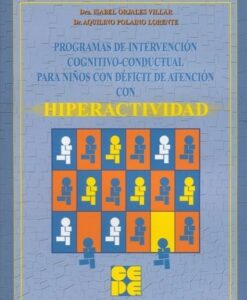 Cognitive behavioral intervention programs for children with attention deficit hyperactivity disorder (ADHD)
20,90 € (VAT not included)
Cognitive behavioral intervention programs for children with attention deficit hyperactivity disorder (ADHD)
20,90 € (VAT not included)
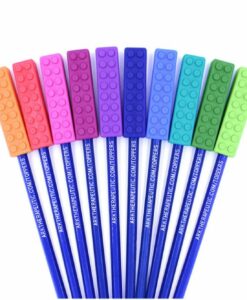 Textures pencil teether - brick
9,99 € (VAT not included)
Textures pencil teether - brick
9,99 € (VAT not included)
Showing 109–144 of 144 resultsSorted by latest
Price filter
No account yet?
Create an Account130 foam letters, 5 cm high, of different colors that can be aligned to compose syllables, words,... Very interesting resource in literacy learning, as it allows to create multiple and varied phonological awareness activities such as: phoneme-grapheme correspondence, analysis and location of sounds and letters, syllabic segmentation, etc. Includes a plastic box for storage and transportation.
https://logopedicum.com/wp-content/uploads/2015/07/letras-de-espuma-247x300.jpg 11.98 instock Areas of DevelopmentHearing and languageReading and writingLearning CornersReading and writingLANGUAGEPhonetics and phonologyLEARNINGSReading and writingWood 0 0.00 0 https://logopedicum.com/wp-content/uploads/2015/07/letras-de-espuma-247x300.jpg 22232202215217981764 11.98 9.90 0.00 0.00 2015-07-20T10:33:46+02:00The reduction of dyslexia sometimes leads to repetitive exercises of graphic and sound type that, besides being insufficient, can be boring. This material presents a different approach, with varied stimuli and exercises, supported by the following materials:
1. A guide book, with abundant ortho-drawings and an extensive list of exercises and activities, based on the vision of words and drawings. 2. A CD-ROM with more than 400 ortho-drawings, accompanied by the sound of the corresponding word, which can be heard as a whole or by isolated syllables. The association of drawing and word helps in a very effective way to facilitate reading, even of long or complex words. It has 132 exercises in which the drawings can be seen fixed or moving, in addition to hearing their words. Example: monk and sheep are animated by clicking on them.
Seeing the pictures and hearing the sound of veterinarians, bubbles, or whizzes helps to cope with vocabulary that was almost insurmountable in the usual methods. 3. A touch box with a curtain into which children put their hands to blindly identify letters, objects or spatial structures and diagrams. 4. An alphabet with raised letters that allow them to discriminate by touch doubtful letters: b, p, t; q, g; n, u, as well as confusing syllables: pra, par, las, sal. 5. Orthographic memory cards. There are 72 pairs of cards, one with a drawing and a word mounted, the other with the drawing without the word. With these cards you can do exercises of spatial perception, identification of shapes, invention of sentences or short stories, etc.
Text in Spanish. https://logopedicum.com/wp-content/uploads/2019/05/portada40-247x223.jpg 64.48 instock Areas of DevelopmentLEARNINGSReading and writingReading and writingWood 0 0.00 0 https://logopedicum.com/wp-content/uploads/2019/05/portada40-247x223.jpg 21521783179817621685 64.48 62.00 0.00 0.00 2019-09-17T16:21:42+02:00